Paul H Porter
age ~43
from Port Wentworth, GA
- Also known as:
-
- Hunter P Porter
- Hunter H Porter
- Porter P Hunter
Paul Porter Phones & Addresses
- Port Wentworth, GA
- Fort Wainwright, AK
- Bowling Green, KY
- Tuscaloosa, AL
- 74 Roseberry Cir, Port Wentworth, GA 31407
Work
-
Company:Paul R Porter MD
-
Address:934 S Broadway St Suite 3, Portland, TN 37148
-
Phones:6153256446
Education
-
School / High School:East Tennessee State University/James H Quillen College Of Medicine1982
Languages
English
Awards
Healthgrades Honor Roll
Ranks
-
Certificate:Emergency Medicine
Images
Specialities
Internal Medicine • Emergency Medicine
Resumes

Paul Porter Tuscaloosa, AL
view sourceWork:
United States Army
Jun 1999 to Jan 2013
Jun 1999 to Jan 2013
Education:
University of Maryland University College
Adelphia, MD
2010 to 2010
none Hillcrest High
Tuscaloosa, AL
1995 to 1999
High school diploma
Adelphia, MD
2010 to 2010
none Hillcrest High
Tuscaloosa, AL
1995 to 1999
High school diploma

Paul Porter Missouri City, TX
view sourceWork:
Baylor College of Medicine
Jun 2006 to 2000
Postdoctoral Fellow, Dept. Immunology/Pulmonary Medicine University of Louisville
Louisville, KY
Jul 1999 to Dec 2005
Graduate Research Assistant
Jun 2006 to 2000
Postdoctoral Fellow, Dept. Immunology/Pulmonary Medicine University of Louisville
Louisville, KY
Jul 1999 to Dec 2005
Graduate Research Assistant
Education:
Baylor College of Medicine
Houston, TX
2008
Immunology University of Louisville
Louisville, KY
2005
Ph. D. in Pharmacology and Toxicology University of Louisville
Louisville, KY
Jan 1999 to Jan 2003
M. S. in Pharmacology and Toxicology Western Kentucky University
Bowling Green, KY
Jan 1994 to Jan 1999
B. S. in Biochemistry
Houston, TX
2008
Immunology University of Louisville
Louisville, KY
2005
Ph. D. in Pharmacology and Toxicology University of Louisville
Louisville, KY
Jan 1999 to Jan 2003
M. S. in Pharmacology and Toxicology Western Kentucky University
Bowling Green, KY
Jan 1994 to Jan 1999
B. S. in Biochemistry
Skills:
Basic molecular techniques: Western blot, Northern blot, Southern blot, electrophoretic mobility shift assays (EMSA), protein concentration determination (Bradford, Lowery, and TCA), spectrometry, fluorometry, confocal microscopy, fluorescent microscopy, protein staining (Ponceau Red, Ruby Red, Coomasee Blue), DNA concentration determination using PicoGreen, dual luciferase luminescence, quantification of apoptosis by Hoechst staining and caspase cleavage, polymerase chain reaction, oligo-nucleotide primer design, site directed mutagenesis, plasmid cloning, fluorescent DNA sequencing, nitric oxide analysis, enzyme-linked immunosorbent assay (ELISA), ELISA spot assays, multiplex cytokine analysis, liposome production of hydrophilic compounds in dilauryl phosphatidylcholine (DLPC) for inhalation delivery, dialysis, lyophilization, measurement of proteinase activity (ENZcheck and zymography), and production of allergens. Cellular techniques: DNA repair analysis (host cell reactivation, slot blot analysis using DNA-adduct specific antibodies, and strand specific repair southern blot), shuttle vector mutagenesis, Hprt mutagenesis, cell viability (MTT and AlamarBlue), colony forming ability, stable and transient transfection of eukaryotic cells (electroporation and phosplipid), siRNA in eukaryotic cells, differential cell analysis via cytospin and smear slides, isolation of immune cell populations (MACs and flow cytometry assisted cell sorting), isolation of peripheral blood mononuclear cells (PBMC), cell culture of primary and immortalized fibroblasts, EBV transformed lymphocytes, and spontaneously immortalized keratinocytes. nimal techniques (mouse and rat experience): Animal husbandry, housing, genotyping, breeding, organ isolation (blood, brain, lymph node, liver, lung, and spleen), organ homogenization for immune assays, inhalation anesthetic administration, intranasal challenge, tracheal intubation, intravenous cannulation/injection, intraperitoneal injection, gastric lavage, measurement of airway hyper-reactivity via whole body phythesmography, bronchial alveolar lavage (BAL) collection, lung preparation for histology, histological analysis (hematoxylin and eosin stain, periodic acid-Schiff stain, Grocott's silver fungal stain). Mycology techniques: Growth/isolation of fungi from environmental, animal, and clinical samples (BAL and sinus lavage), preparation of slides for fungal identification (lactophenol cotton blue and calcifor white staining), growth of fungi for allergen production, preparation of cryogenic conidia stocks for inhalation experiments, and fungal clearance and dissemination assays.

Paul Porter Missouri City, TX
view sourceWork:
Baylor College of Medicine
Aug 2011 to 2000
Instructor Baylor College of Medicine
Houston, TX
Jul 2006 to Jul 2011
Post Doctoral Fellow University of Louisville
Louisville, KY
Jul 1999 to Dec 2005
Graduate Researcher
Aug 2011 to 2000
Instructor Baylor College of Medicine
Houston, TX
Jul 2006 to Jul 2011
Post Doctoral Fellow University of Louisville
Louisville, KY
Jul 1999 to Dec 2005
Graduate Researcher
Education:
Baylor College of Medicine
Houston, TX
Jan 2006 to Jan 2008
Post Doctoral Graduate Training in Immunology University of Louisville
Louisville, KY
Jan 1999 to Jan 2005
PhD (2005), MS (2003) in Pharmacology and Toxicology Western Kentucky University
Bowling Green, KY
Jan 1994 to Jan 1999
BS in Biochemistry
Houston, TX
Jan 2006 to Jan 2008
Post Doctoral Graduate Training in Immunology University of Louisville
Louisville, KY
Jan 1999 to Jan 2005
PhD (2005), MS (2003) in Pharmacology and Toxicology Western Kentucky University
Bowling Green, KY
Jan 1994 to Jan 1999
BS in Biochemistry
Skills:
Molecular Biology, Cellular Biology, Clinical Research, Animal Research
Medicine Doctors

Dr. Paul R Porter, Portland TN - MD (Doctor of Medicine)
view sourceSpecialties:
Internal Medicine
Emergency Medicine
Emergency Medicine
Address:
Paul R Porter MD
934 S Broadway St Suite 3, Portland, TN 37148
6153256446 (Phone)
934 S Broadway St Suite 3, Portland, TN 37148
6153256446 (Phone)
Procedures:
Echocardiography
Ekg (Electrocardiogram, Ecg)
Pap Smear
Physicals
Skin Biopsy
Skin Lesion Excision
Suture Uncomplicated Lacerations
Ultrasound
Xrays In Office
Ekg (Electrocardiogram, Ecg)
Pap Smear
Physicals
Skin Biopsy
Skin Lesion Excision
Suture Uncomplicated Lacerations
Ultrasound
Xrays In Office
Conditions:
Anemia
Anxiety
Arthritis
Asthma
Copd (Chronic Obstructive Pulmonary Disease)
Depression
Diabetes
Emphysema
Gastro Esophageal Reflux Disease
Heart Disease
Hyperlipidemia
Hypertension (High Blood Pressure)
Internal Medicine
Osteoporosis
Sleep Apnea
Anxiety
Arthritis
Asthma
Copd (Chronic Obstructive Pulmonary Disease)
Depression
Diabetes
Emphysema
Gastro Esophageal Reflux Disease
Heart Disease
Hyperlipidemia
Hypertension (High Blood Pressure)
Internal Medicine
Osteoporosis
Sleep Apnea
Certifications:
Emergency Medicine
Internal Medicine
Internal Medicine
Awards:
Healthgrades Honor Roll
Languages:
English
Hospitals:
Paul R Porter MD
934 S Broadway St Suite 3, Portland, TN 37148
Sumner Regional Medical Center
555 Hartsville Pike, Gallatin, TN 37066
TriStar Hendersonville Medical Center
355 New Shackle Island Road, Hendersonville, TN 37075
934 S Broadway St Suite 3, Portland, TN 37148
Sumner Regional Medical Center
555 Hartsville Pike, Gallatin, TN 37066
TriStar Hendersonville Medical Center
355 New Shackle Island Road, Hendersonville, TN 37075
Philosophy:
As a general primary care internist, I try to provide all my patients basic health care needs. I believe healthy lifestyle and preventive medicine are the foundation to good health. Our aim is to treat each individual with respect and fairness. If specialized care is needed then those referrals are made but we will remain in a gate keepers role to coordinate care. Our practice is ranked high in quality and low in cost of overall healthcare.
Education:
Medical School
East Tennessee State University/James H Quillen College Of Medicine
Graduated: 1982
Medical School
University Of Ar Med Scis
Graduated: 1983
Medical School
University Of Ar Med Scis
Graduated: 1985
Medical School
Florida College
Graduated: 1976
Medical School
Western Kentucky University
Graduated: 1978
East Tennessee State University/James H Quillen College Of Medicine
Graduated: 1982
Medical School
University Of Ar Med Scis
Graduated: 1983
Medical School
University Of Ar Med Scis
Graduated: 1985
Medical School
Florida College
Graduated: 1976
Medical School
Western Kentucky University
Graduated: 1978

Paul R. Porter
view sourceSpecialties:
Internal Medicine
Education:
Medical School
East Tennessee State University College of Medicine
Graduated: 1982
East Tennessee State University College of Medicine
Graduated: 1982
Procedures:
Destruction of Benign/Premalignant Skin Lesions
Electrocardiogram (EKG or ECG)
Vaccine Administration
Electrocardiogram (EKG or ECG)
Vaccine Administration
Conditions:
Acute Sinusitis
Atrial Fibrillation and Atrial Flutter
Chronic Renal Disease
Contact Dermatitis
Disorders of Lipoid Metabolism
Atrial Fibrillation and Atrial Flutter
Chronic Renal Disease
Contact Dermatitis
Disorders of Lipoid Metabolism
Description:
Dr. Porter graduated from the East Tennessee State University College of Medicine in 1982. He works in Portland, TN and specializes in Internal Medicine.

Paul R Porter, Portland TN
view sourceSpecialties:
Internist
Address:
934 S Broadway St, Portland, TN 37148
Education:
East Tennessee State University, James H. Quillen College of Medicine - Doctor of Medicine
University Hospital of Arkansas for Medical Sciences - Residency - Internal Medicine
University Hospital of Arkansas for Medical Sciences - Residency - Internal Medicine
Board certifications:
American Board of Internal Medicine Certification in Internal Medicine
License Records
Paul Anthony Porter
License #:
79082 - Active
Category:
Nursing
Issued Date:
Dec 30, 2014
Effective Date:
Dec 30, 2014
Expiration Date:
Oct 31, 2018
Type:
Registered Nurse
Paul Anthony Porter
License #:
8900 - Expired
Category:
Nursing
Issued Date:
Dec 8, 2014
Effective Date:
Dec 30, 2014
Expiration Date:
Feb 8, 2015
Type:
Registered Nurse - Temporary
Paul L Porter
License #:
EMB00880 - Expired
Category:
Embalming/Funeral Directing
Issued Date:
Jan 1, 1899
Expiration Date:
Dec 31, 2008
Type:
Funeral Director/Embalmer
Lawyers & Attorneys

Paul Christian Porter - Lawyer
view sourceAddress:
2030880000 (Office)
Licenses:
New York - Currently registered 2007
Education:
Univ. of Michigan

Paul Porter - Lawyer
view sourcePhone:
7043738847 (Phone), 7043536204 (Fax)
Work:
McGuire Woods, Partner
Specialties:
Business Law
Securities Law
Corporate Governance
Mergers & Acquisitions
Private Equity & Venture Capital
Securities & Corporate Finance
Securities Law
Corporate Governance
Mergers & Acquisitions
Private Equity & Venture Capital
Securities & Corporate Finance
Jurisdiction:
North Carolina
Law School:
University of Notre Dame
Education:
University of Notre Dame, JD
University of Arkansas
University of Arkansas
Memberships:
North Carolina State Bar
Links:
Website
Name / Title
Company / Classification
Phones & Addresses
Carmana Construction
Construction & Remodeling Services
Construction & Remodeling Services
3854 196A St, Langley, BC V3A 1A6
7788935900, 6045345928
7788935900, 6045345928
Owner, Internal Medicine, Medical Doctor
Porter, Dr Paul MD
Medical Doctor's Office Ret Misc Merchandise Medical Doctor's Office
Medical Doctor's Office Ret Misc Merchandise Medical Doctor's Office
934 S Broadway St, Portland, TN 37148
6153256446
6153256446
PORTER & PORTER PROPERTIES, LTD
AFFORDABLE MOVING, LTD
Carmana Construction
Construction & Remodeling Services
Construction & Remodeling Services
7788935900, 6045345928
PORTER'S CLEANING CENTER, LLC
Paul Porter MD
Internist
Internist
934 S Broadway St #3, Portland, TN 37148
934 S Broadway, Portland, TN 37148
6153256446
934 S Broadway, Portland, TN 37148
6153256446
Director
P & B LIQUORS, INC
Isbn (Books And Publications)

Metaphors and Monsters: A Literary Critical Study of Daniel 7&8
view sourceAuthor
Paul Porter
ISBN #
9140048675


Youtube
Plaxo

Paul Porter
view sourceAlbuquerque/HollywoodPresident/Producer at Rogue Taurus Productions LLC

Paul Porter
view sourceWashington, DC

Paul Porter
view sourceCocoa Beach, Florida

Paul Porter
view sourceBased in Minneapolis, MNPast: Network Security Architect at UnitedHealth Group, Chairman, CEO at Proteck Security Inc...

paul porter
view sourceBankers Conseco

Edward Paul Porter
view source
Paul Denver Porter
view source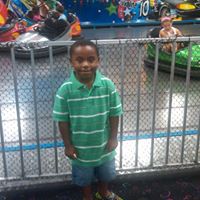
Paul Porter A
view source
Paul Porter Sr.
view source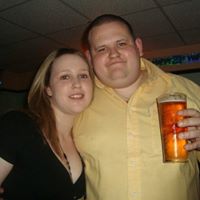
Paul Andrew Porter
view source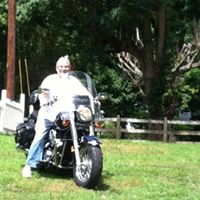
Paul Porter Sr.
view source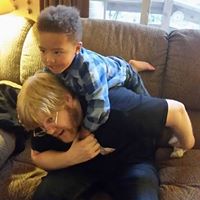
Paul Porter
view source
Paul Randall Porter
view sourceMyspace

Paul Porter
view source
Paul Porter
view source
Paul Porter
view sourceClassmates

Paul Porter
view sourceSchools:
Bordentown Regional High School Bordentown NJ 1987-1991

Paul Porter
view sourceSchools:
Fieldsboro Elementary School Bordentown NJ 1981-1984

Paul Porter
view sourceSchools:
Wylie E. Groves High School Beverly Hills MI 1979-1983
Community:
Michael Sinclair, Peggy Gillespie, Craig Sutton

Paul Porter
view sourceSchools:
Pope High School Marietta GA 2004-2008

Paul Porter
view sourceSchools:
Clarkdale Attendance Center Meridian MS 1972-1976
Community:
Terry Rice

Paul Porter
view sourceSchools:
McCullough High School Monticello MS 1977-1981
Community:
Tim Dunagan, Sadie Bowdry, Goldie Jones, Calvin Longino

Paul Porter
view sourceSchools:
Kino Junior High School Mesa AZ 1985-1988
Community:
Gayle Petersen, Bill Jakeman

Paul Porter
view sourceSchools:
Mckell High School South Shore KY 1958-1962
Community:
Janice Brown, James Fraley, Richard Masters, David Williams
Googleplus

Paul Porter
Work:
Rogue Taurus Productions LLC - Producer (2008)
Education:
New York Film Academy, Hollywood - Producing for Film and TV, University of New Mexico - Film and Media Art, UCLA - Film and Television

Paul Porter
Work:
St micheals hospital - Porter (2010)
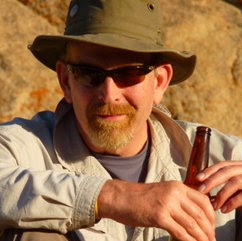
Paul Porter
About:
Passionate wanderer and shooter in the endlessly epic beauty of the outdoors, Paul lives and works in the an Francisco Bay Area. While he especially likes wandering with friends and family, he someti...
Tagline:
Bay Area Landscape Photographer.

Paul Porter
Education:
Averett University - Accounting/Managment

Paul Porter
Work:
Bradford College - Sports Academies Coordinator Manager

Paul Porter
About:
I am a CERTIFIED FINANCIAL PLANNER professional and my practice covers all aspects of financial planning with a focus on retirement.
Tagline:
CERTIFIED FINANCIAL PLANNER

Paul Porter

Paul Porter
Get Report for Paul H Porter from Port Wentworth, GA, age ~43







